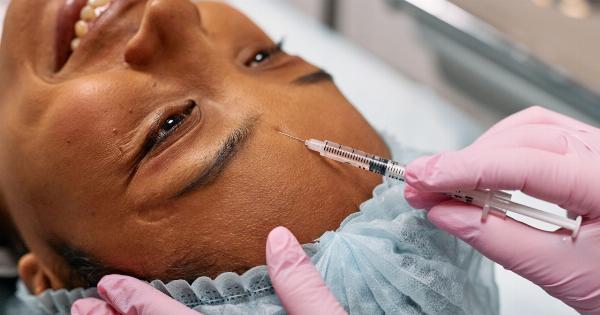It’s no secret that taking care of our physical appearance is important to most people. We invest in skincare products, exercise routines, and haircuts to maintain a youthful and attractive look.
However, sometimes all these efforts might not be enough to combat the signs of aging. That’s when some individuals turn to more drastic measures, like undergoing a facelift.
A facelift, also known as rhytidectomy, is a surgical procedure aimed at reducing the appearance of wrinkles and sagging skin on the face and neck.
The procedure involves the removal of excess skin, tightening of underlying tissues, and sometimes repositioning of fat deposits. While it may seem extreme to some, there are compelling reasons why people choose to go under the knife instead of having a regular lunch break.
The Desire for a More Youthful Appearance
The primary motivation behind getting a facelift is the desire to look younger. As we age, our skin loses elasticity, and wrinkles become more prominent. Furthermore, the effects of gravity lead to sagging skin and jowls.
These changes can affect a person’s self-confidence and self-esteem. A facelift can help address these concerns by tightening and lifting the skin, making individuals look more youthful and rejuvenated.
Boosting Self-Confidence
When we feel good about our appearance, it naturally boosts our self-confidence. Looking younger and more refreshed can have a profound impact on how we carry ourselves in social and professional settings.
Whether it’s attending a reunion, going on a date, or presenting in front of clients, feeling confident can make all the difference. A facelift can provide the confidence boost needed to tackle these situations head-on.
Long-Lasting Results
While non-surgical treatments like Botox or dermal fillers can provide temporary improvements, the results of a facelift are generally more long-lasting.
The surgery addresses the underlying causes of facial aging, providing more significant and enduring results. This means individuals can enjoy a more youthful appearance for many years, reducing the need for frequent touch-ups and maintenance procedures.
Customized Approach
One of the benefits of a facelift is that the procedure can be tailored to the individual’s specific needs and concerns.
The surgeon will evaluate the patient’s facial structure and discuss their desired outcome before developing a customized surgical plan. This personalized approach ensures that the facelift addresses specific problem areas, resulting in a more natural-looking and harmonious outcome.
Combining Procedures for Comprehensive Results
In some cases, individuals may choose to combine a facelift with other procedures to achieve a more comprehensive rejuvenation.
Procedures like eyelid surgery, brow lift, or neck lift can be performed simultaneously to further enhance the overall results. This approach allows individuals to address multiple concerns in one operation and achieve a more balanced and harmonious transformation.
Recovery Process and Downtime
Although the idea of undergoing surgery might be daunting, the recovery process after a facelift is generally well-tolerated by most patients.
Swelling, bruising, and discomfort are common in the days following the procedure, but these symptoms gradually diminish over time. Most individuals can return to work and resume their regular activities within two weeks, though it’s essential to follow the surgeon’s post-operative instructions for optimal healing.
Choosing the Right Surgeon
When considering a facelift, selecting a skilled and experienced surgeon is crucial. Researching and consulting with multiple surgeons can help individuals choose a professional who specializes in facial rejuvenation procedures.
Viewing before and after photos, reading patient testimonials, and asking questions during the consultation process can give individuals confidence in their surgeon’s abilities and create realistic expectations.
Risks and Considerations
As with any surgical procedure, there are risks involved with getting a facelift. These risks can include bleeding, infection, scarring, and nerve damage.
However, by choosing a qualified surgeon and following pre and post-operative instructions, the chances of experiencing complications are significantly reduced. It’s important for individuals to have a thorough understanding of the potential risks and consider them carefully before making a decision.
Alternative Non-Surgical Options
While a facelift provides a powerful solution for facial rejuvenation, it’s not the only option available. For individuals who prefer nonsurgical alternatives, there are several options to consider.
These can include Botox injections to relax wrinkles, dermal fillers to restore lost volume, laser treatments to improve skin texture, or chemical peels for skin resurfacing. These treatments can provide noticeable improvements but may not offer the same level of results as a facelift.
Conclusion
While the decision to have a facelift is a personal one that should be carefully considered, it’s clear that for many individuals, the benefits outweigh the risks.
The desire for a more youthful appearance, increased self-confidence, and long-lasting results are significant factors driving people towards this procedure. By choosing a reputable surgeon and understanding the associated risks, individuals can achieve a more refreshed and rejuvenated look, giving them the confidence and self-assurance to face the world.





























